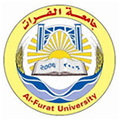آخر الأخبار
إمكانية استغلال المخلفات الزراعية النباتية اقتصاديا في سورية
2018, Volume 11, issue 41,pp 154-173| Cite as
The possibility of exploiting agricultural agricultural waste economically in Syria
| authors |
Ahmed Medhat |
| Abstract |
This research was carried out in order to shed light on the annual volume of waste and the large losses resulting from the abandonment of huge national resources, most of which are neglected or burned as a result of the failure to adopt a wise policy in the exploitation of agricultural waste. The agricultural production is subject to a significant amount of agricultural agricultural waste from straw, wood, straw, straw, crop and crop products, and the remains of agricultural and other operations. The amount of agricultural plant residues in Syria during the study period reached about (22.6) thousand tons per year, which could be converted to economically viable products. The study of the conversion of agricultural residues of petroleum products, compost, center feed, mushrooms, biogas, and kerosene produced in the course of the year (2018) Of the biogas). By converting this quantity of agricultural waste into energy, the equivalent amount of oil reached 5.907 thousand tons /year. As for the compost (organic manure), the results showed that the equivalent quantity of compost agricultural wastes was about (56.61) thousand m³ / year with a net return of about (107.6) million. / year. When used for the production of feed center, the quantity was estimated at 5.6 thousand tons / year. As for the compost (organic manure), the results showed that the equivalent quantity of compost agricultural wastes was about (56.61) thousand m³ / year with a net return of about (107.6) million. / year. When used for the production of feed center, the quantity was estimated at about 5.6 thousand tons / year at a value of about (226.5) million. SP. When used to produce mushrooms, it was estimated at (11.3) thousand tons per year. Annually at a value of about (397) million SP annually. When used in the biogas industry, the amount is estimated at( 3.3) thousand m³, giving the amount of kerosene is estimated at about( 2.0) thousand liters / year. Keywords: agricultural waste, compost, economic yield, non- traditional energy |
| الكاتب |
احمد مدح |
| الملخص |
نفذ هذا البحث بهدف تسليط الضوء على حجم الهدر السنوي و الخسائر الكبيرة التي تحصل نتيجة التفريط بثروات وطنية هائلة أغلبها يهمل أو يحرق نتيجة لعدم تبني سياسة حكيمة في استغلال المخلفات الزراعية .
ويتخلف عن الانتاج الزراعي كمية لابأس بها من المخلفات الزراعية النباتية من قش , وأحطاب وأتبان وعروش محاصيل ونواتج تقليم وبقايا عمليات زراعية وغيرها حيث بلغت كمية المخلفات الزراعية النباتية في سورية خلال فترة الدراسة حوالي (22.6) ألف طن سنويا, أمكن تحويلها إلى منتجات ذات عائد اقتصادي .
تمت الدراسة خلال عام (2018)م لإمكانية تحويل مخلفات المحاصيل الزراعية خلال أعوام (2000 – 2005_ 2009)م إلى منتجات ذات قيمة اقتصادية, وتمت دراسة تحويل المخلفات الزراعية لمنتجات (بترولية- كمبوست- علف مركز- عيش الغراب- والبيوجاز- والكيروسين- الناتج من البيوجاز).
وبتحويل تلك الكمية من المخلفات الزراعية إلى طاقة فقد بلغت كمية البترول المكافئ حوالي(5.907)ألف طن / سنويا. أما بالنسبة للكمبوست (السماد العضوي الصناعي) أوضحت النتائج أن الكمية المعادلة للمخلفات الزراعية من الكمبوست كانت حوالي(56.61)ألف م3/ سنة بصافي عائد حوالي(107.6)مليون ل.س /سنويا. وعند استخدام هذه المخلفات لانتاج علف مركز قدرت القيمة بحوالي (5.6)ألف طن /سنويا بقيمة حوالي(226.5)مليون .ل . س /وعند استخدامها لانتاج عيش الغراب قدرت بحوالي(11.3)ألف طن سنويا بقيمة حوالي (397)مليون .ل . س سنويا. وعند استخدامها في صناعة البيوجاز قدرت الكمية بحوالي(3.3)ألف م3 تعطي كمية الكيروسين أقدر بحوالي (2.0)ألف لتر/ سنويا . |














